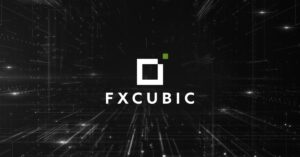Ethereum may have pioneered token sales, but Solana is rapidly becoming the world’s launchpad of choice for decentralized crowdfunding. With platforms like Pump.fun and LetsBonk.fun breaking records, Orca and Raydium refining infrastructure, and institutional launchpads like SeedList entering the ecosystem, Solana’s blockchain is proving itself as the fastest, cheapest, and most viral environment for token distribution.
This interview with CryptoSheldon, a Solana veteran developer and co-founder of SeedList, explores why Solana is attracting this wave of capital, how SocialFi mechanics are shaping launches, and what 2026 could mean for decentralized fundraising.
Q: Solana has gone from “Ethereum alternative” to crowdfunding hotspot. Why is this happening now?
A: It comes down to three things: speed, cost, and community. On Ethereum, launching can take weeks and tens of thousands in gas fees. On Solana, you can launch in minutes for a fraction of the cost. The Solana community is extremely engaged, borderline cult-like in the best way, and projects get traction faster. And now, integrations with MetaMask, TrustWallet, even PayPal in the U.S., mean the pipeline for capital into Solana is wide open. That’s why we’re seeing not just meme launches, but institutional-scale raises happening natively on Solana.
Q: Pump.fun has become the poster child of this trend. What’s your take on its rise?
A: Pump.fun is proof of what happens when you combine frictionless tech with virality. A half-billion-dollar raise in 12 minutes, that would’ve sounded insane a year ago.
Its embedded liquidity curves, no-barrier interface, and instant social sharing mechanics make it a fundraising machine. It’s raw, it’s chaotic, but it’s effective.
And what’s interesting is how others are iterating on it. LetsBonk.fun actually overtook Pump.fun in July revenue, $37.4M vs. $15.4M, by doubling down on creator incentives and influencer-driven distribution.
That shows it’s not just a one-off. Solana-native crowdfunding is a competitive, fast-moving sector in its own right.
Q: What role are infrastructure players like Orca and Raydium playing here?
A: They’re essential. Without liquidity and anti-bot measures, you get chaos. Orca’s Wavebreak upgrade added CAPTCHA-based protections, making launches fairer. Raydium, on the other hand, ensures new tokens actually have market depth right away, so launches don’t fizzle.
Together, they’re making sure Solana token sales are not just fast and viral, but also sustainable at scale.
Q: Institutional crowdfunding platforms like CoinList and Republic have long track records. How do they fit into Solana’s boom?
A: They add polish and reach. CoinList, for example, helped launch Solana’s own $SOL token in 2020 and later raised $12M for TrueFi, which had Alameda ties. More recently, it teamed up with Bitget’s LaunchX and Cobie’s Echo for WalletConnect’s $10M raise. This is really nice to see after all these years, the institutions and influencers coming together. A few years ago, Republic did India’s largest Solana-based launch with Chingari ($GARI), which no one remembers. These platforms bring compliance, global onboarding, and household-name branding. They prove Solana isn’t just a playground for memes, it’s also where billion-dollar projects get funded.
Q: Where does SeedList fit into this Solana-native landscape?
A: Think of SeedList as the institutional-grade counterpart to Pump.fun. We’re combining Solana’s speed and low cost with a more structured model for serious projects aiming at $1B+ valuations and Tier-1 exchange listings. Our approach includes SocialFi, so AI-driven merit-based allocations, prioritizing strategic contributors, exchanges, ecosystem funds, and KOLs over passive VCs. Also, we are giving micro-influencers and retail participants real allocation pathways, not scraps, so we create some good karma. Crypto as a whole needs to take a social cue to stop dumping on retail. SeedList also thinks about all the players in the crypto launch value chain, so we want to help project founders by providing pre-vetting partners like liquidity providers, CEXs, legal counsel, and market makers.
So, whereas Pump.fun is about Solan’s speed and virality, SeedList is about Solana’s efficiency and professionalism, which, IMHO, is why it has a cult-like following amongst crypto industry professionals as well as retail.
Q: Some would argue that VCs provide irreplaceable value. Do you see SeedList as eliminating them or just evolving their role?
A: Traditional VCs aren’t going away tomorrow, but their monopoly is over. In crypto, the real “value-add” comes from exchanges, ecosystems, and influencers who actually drive adoption. SeedList reallocates what used to be passive VC capital into that value chain and retail, so projects not only raise money but also get amplified across Solana, Binance, Avalanche, Bybit, and even creators like Mr. Beast. It’s a capital with serious reach and power, not just a check and a prayer.
Q: Looking ahead to 2026, what’s your forecast for Solana-based fundraising?
A: I think Solana will overtake Ethereum as the network of choice for decentralized fundraising in the next 12 months.
The tools are more advanced: AI allocations, bonding curves, and hybrid vetting. Network effects are compounding. Pump.fun grows Bonk, Bonk grows Raydium, Raydium grows SeedList. Both retail and institutional sides are converging here faster than anywhere else. 2026 could be Solana’s defining fundraising cycle. And if it is, it’ll be because Solana figured out how to combine speed, fairness, and scale better than anyone else.
Q: Last question. Is this a bubble or a real structural shift?
A: It’s a structural shift. The data already speaks: half-billion dollar raises in minutes, new models going mainstream, institutional platforms doubling down. Solana isn’t just participating in crowdfunding’s evolution, it’s setting the benchmark.













